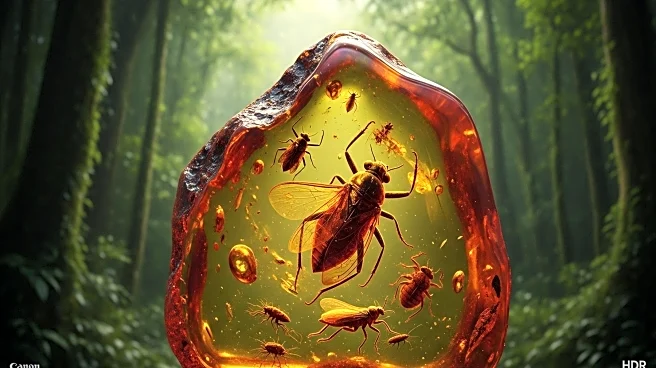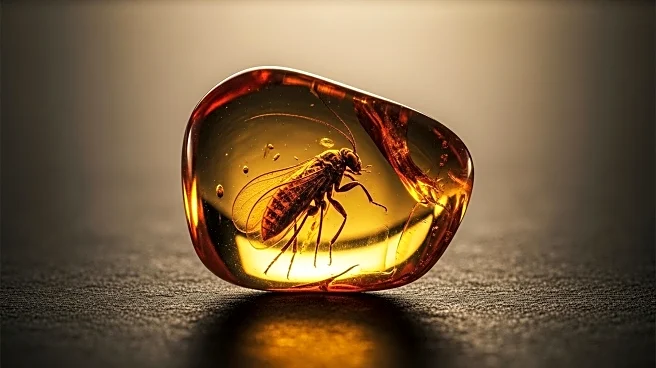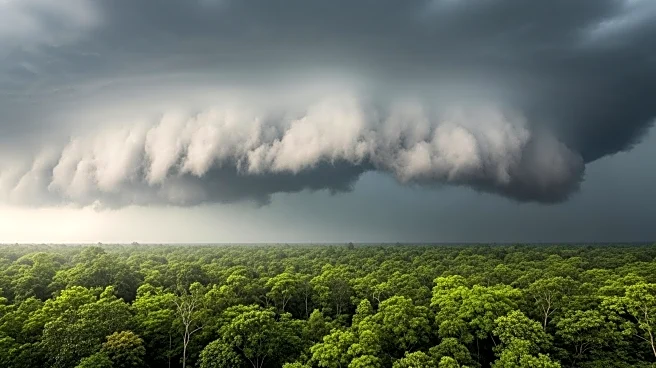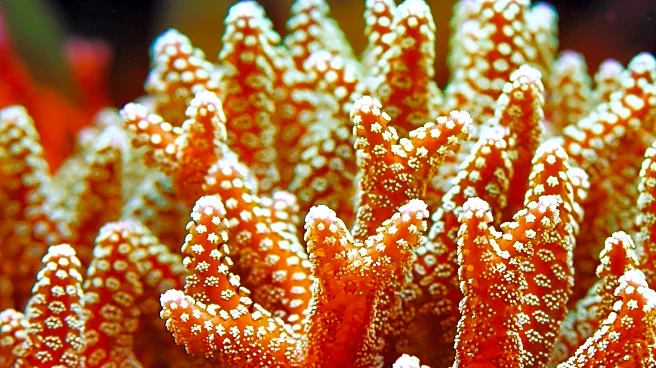What is the story about?
What's Happening?
Scientists have discovered prehistoric insects preserved in amber in South America for the first time, offering insights into the biodiversity of the ancient Amazon rainforest. The amber, found in a quarry in Ecuador, dates back 112 million years and contains beetles, flies, ants, and wasps. This discovery is significant because most amber deposits from the past 130 million years have been found in the Northern Hemisphere. The findings will help researchers understand the interactions between flowering plants and insects during the era of the dinosaurs.
Why It's Important?
The discovery of ancient insects in amber provides a unique window into the past, allowing scientists to study the evolution of ecosystems and the relationships between plants and insects. This research can enhance our understanding of biodiversity and the factors that have shaped the development of life on Earth. The findings also highlight the importance of preserving natural habitats, as they offer valuable insights into the history of life and the processes that drive evolution.
What's Next?
Researchers will continue to analyze the amber to learn more about the biodiversity of the Cretaceous era, focusing on the insects that contributed to the evolution of flowering plants. This ongoing research may lead to new discoveries about the interactions between species and the environmental conditions that influenced their development. The study of ancient ecosystems can inform conservation efforts and strategies to protect modern biodiversity.
AI Generated Content
Do you find this article useful?














